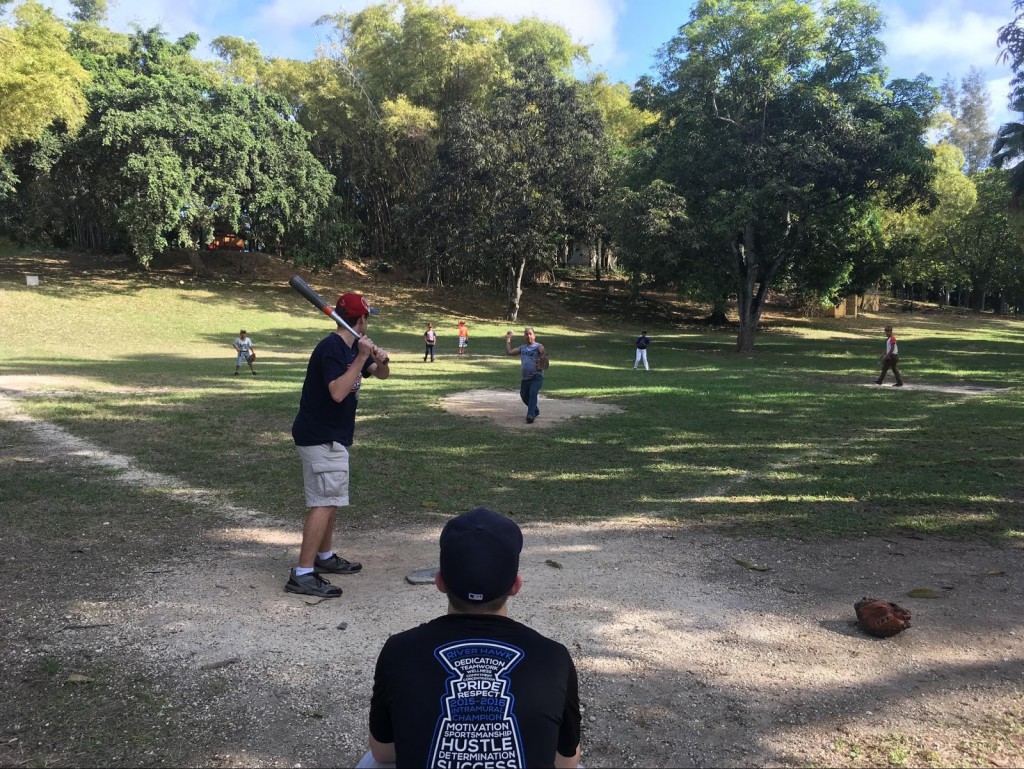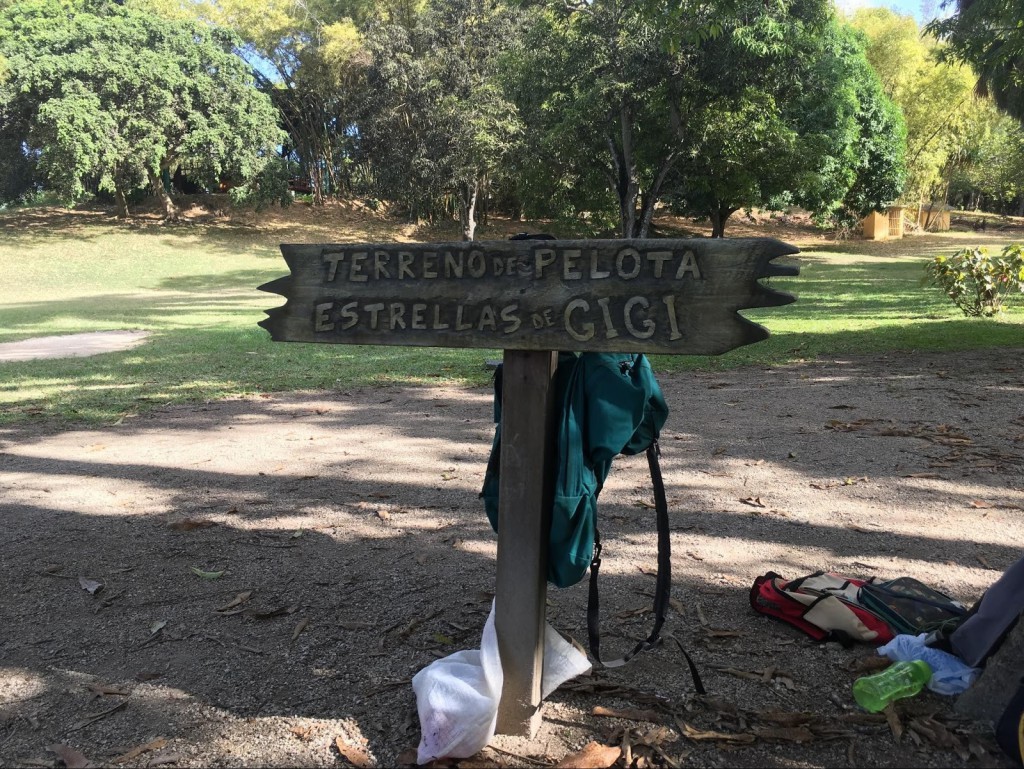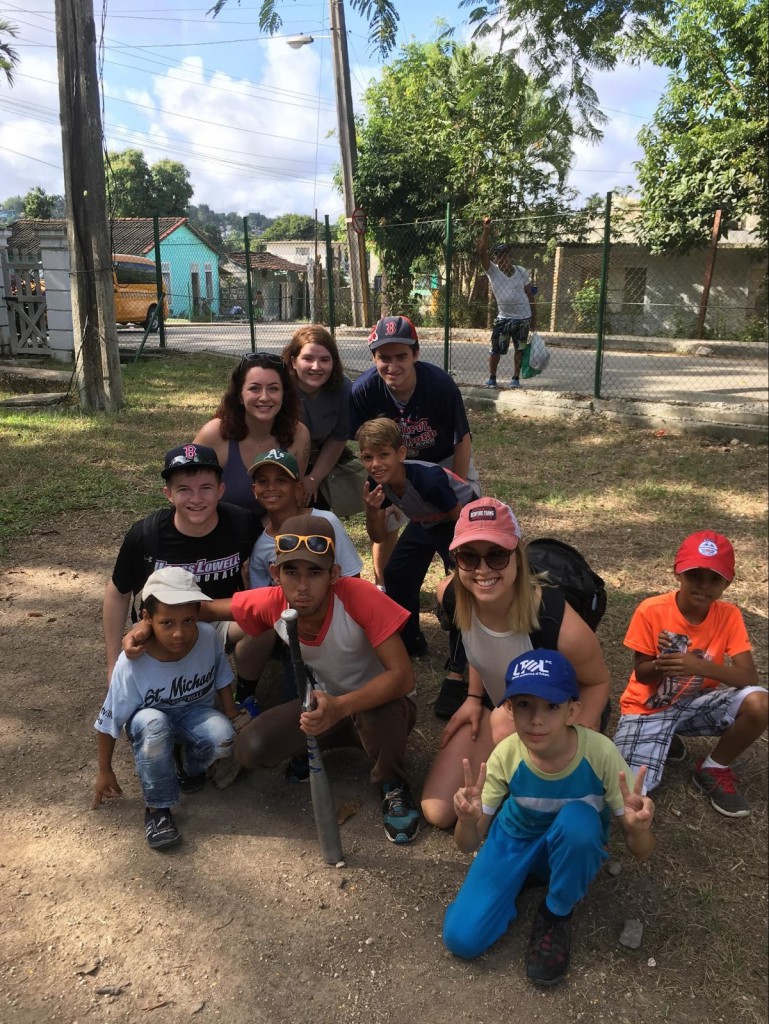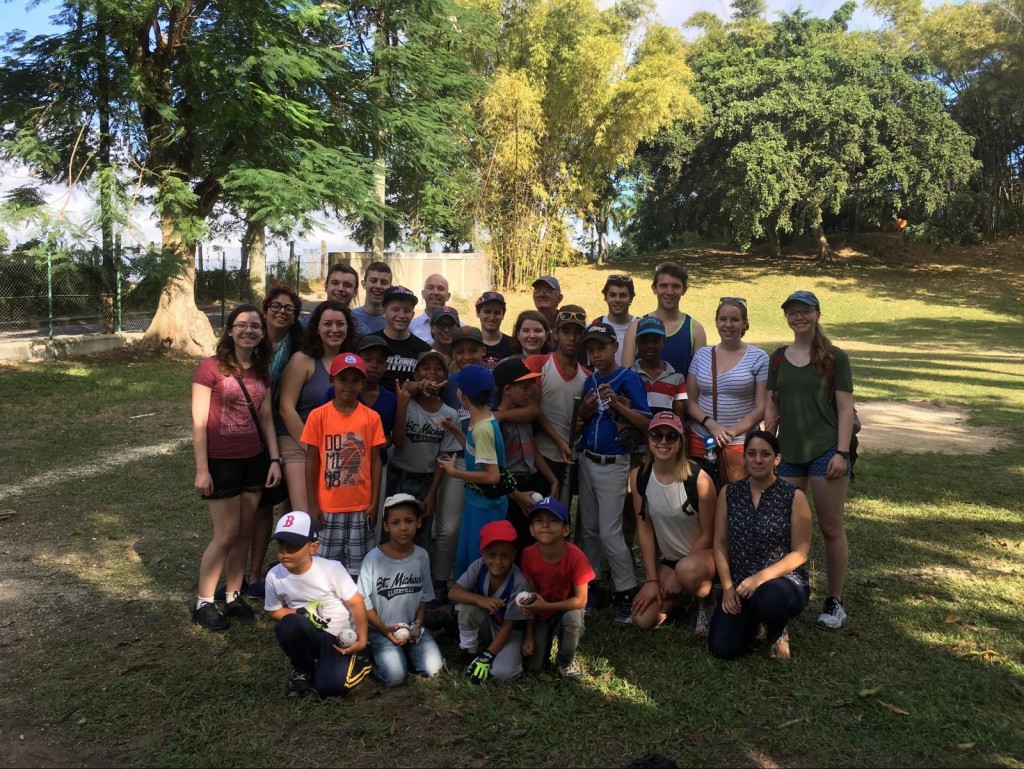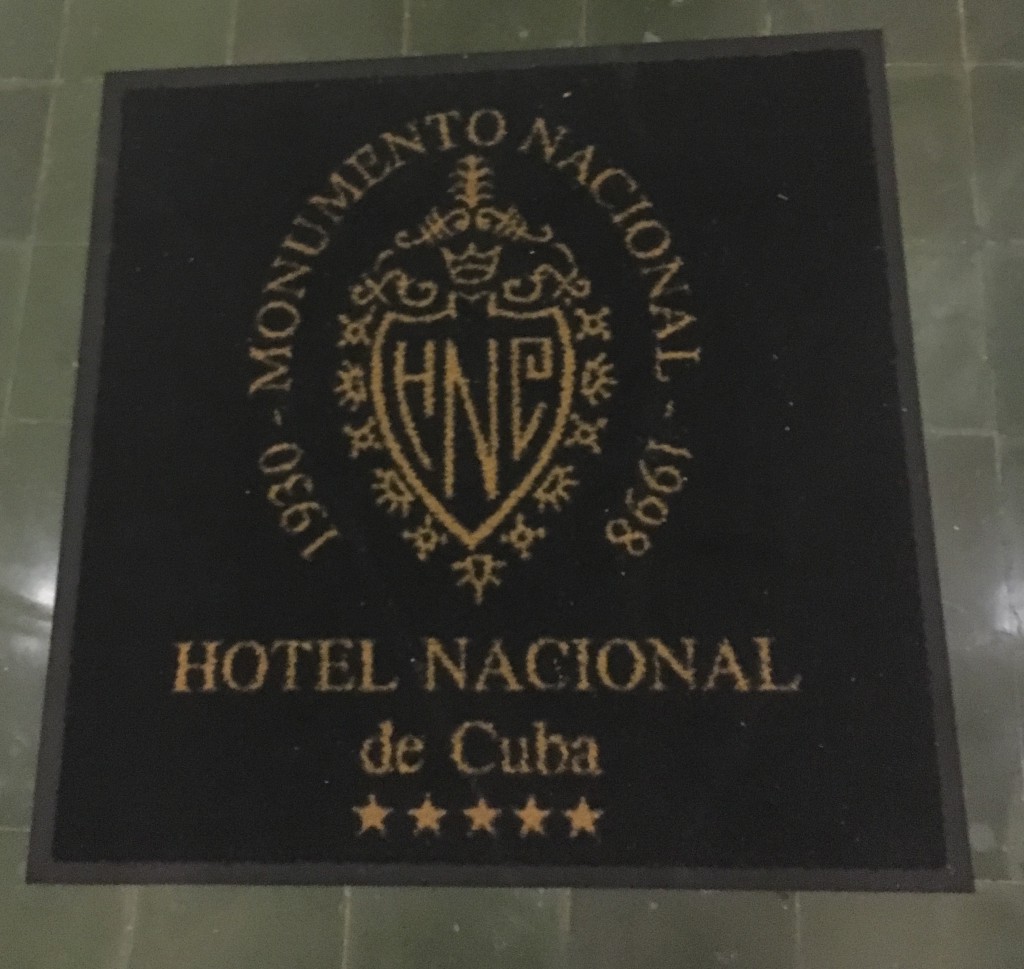With eleven inches of snow on the ground back home, it seems unjust to complain about the temperature on this small island in the Caribbean. But it was indeed another (I admit, relatively) chilly day here in Havana. We started off our day a little earlier than usual, eager to arrive at the Centro de Estudious Martianos (or CEM, as we call it in the business). Awaiting us was a lecture on the history and evolution of education in Cuba, delivered by none other than Senora Ana Sanchez, the director of CEM herself.
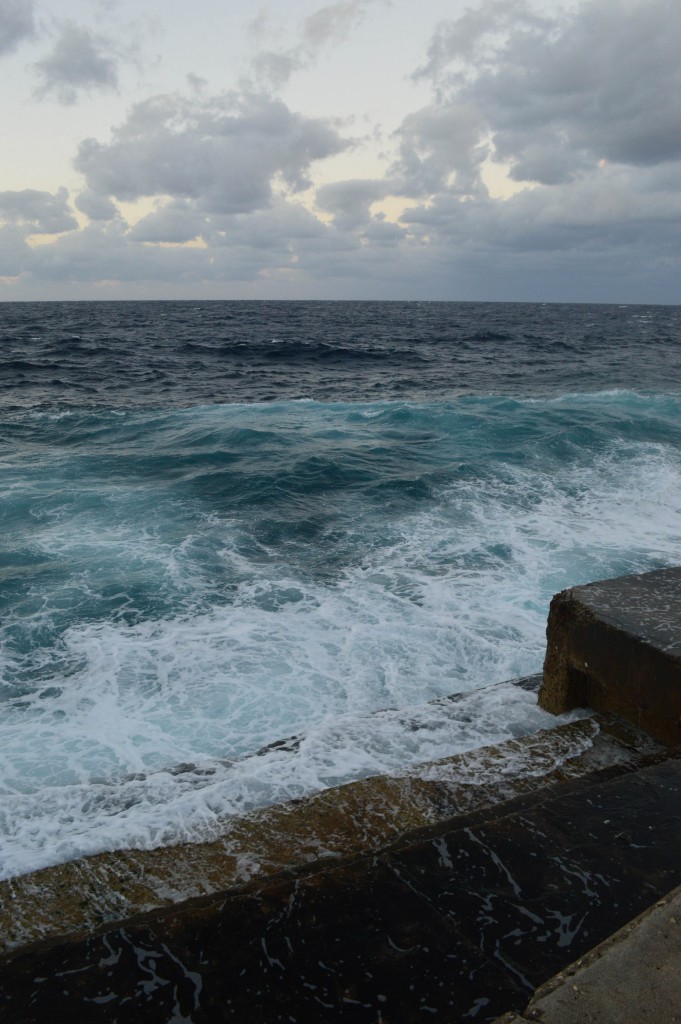
As it turns out, Cuban education has several nuances none of us would have anticipated. In 1959, before the Triumph of the Revolution, the Cuban education system was in utter disarray. With only three universities nationwide, a low education budget, ludicrous amounts of corruption in the Ministry of Education, and an average level of school completion of third grade, the distress of the education system was not far behind that of the social and political structure. After seizing control in the Triumph of the Revolution, Fidel Castro declared that the future of Cuba had to be the “future of men of science and thinking”, and began to establish massive educational reforms throughout Cuba. Today, through the efforts of the Cuban government, Cuba now has 48 universities, an illiteracy rate of only 7.2%, and a school attendance rate of 99.3% in children between 6 years and 11 years old.
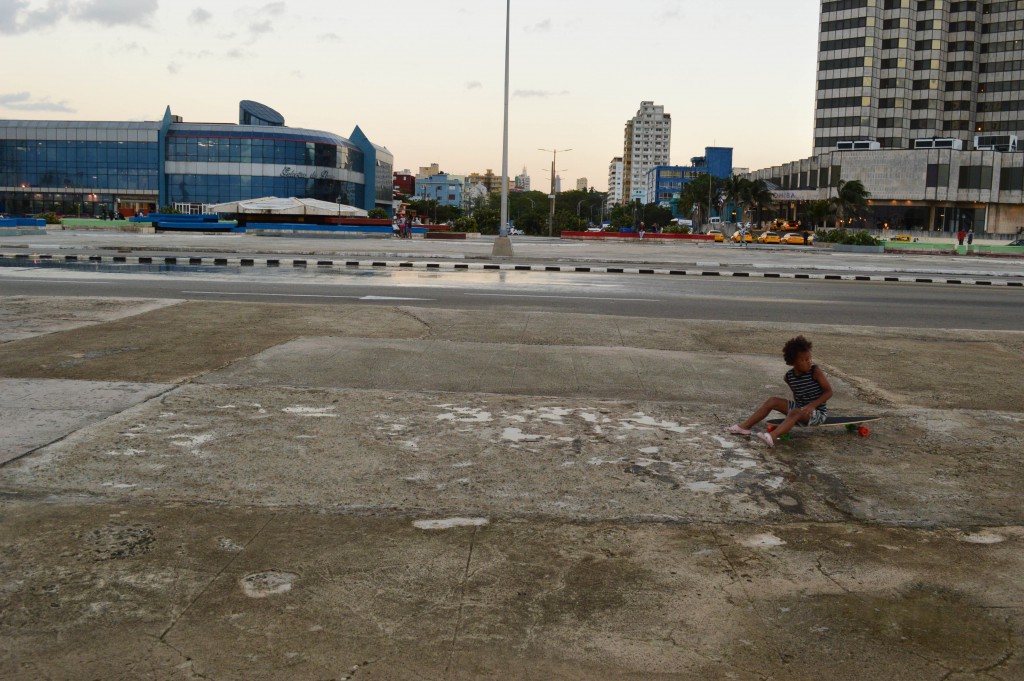
One aspect of Director Sanchez’s lecture that stood out to me was her description of how the United States is portrayed in Cuban education. In U.S. classrooms, Cuba is mentioned in context of three other topics – Fidel Castro as a historical figure, the Cuban Missile Crisis, and the Bay of Pigs Invasion. But the Cuban academic curriculum takes their portrayal of their longtime political enemy a step further. According to Director Sanchez, the United States history is taught with a focus on its origin, the American Revolution, and the Industrial Revolution. However, the intriguing part is that, when teaching students about the United States, a very clear distinction is made between the U.S. people and the U.S. government. This is a philosophy we have heard many times from a wide variety of Cubans, and it gives me great hope for a future of peaceful relations between our two countries.
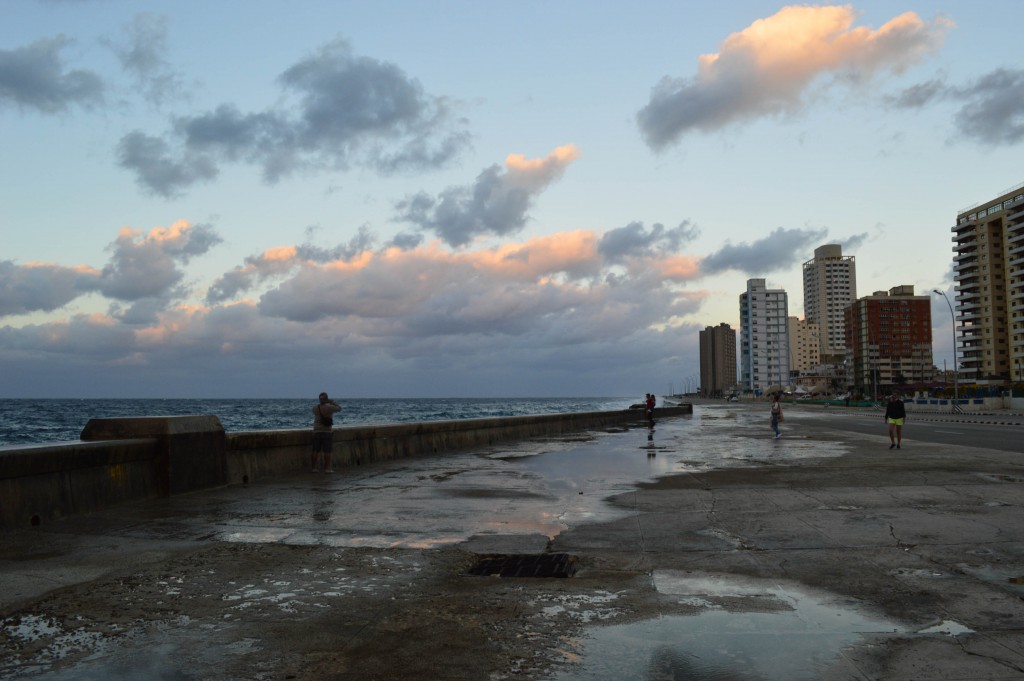
Later this afternoon we had a couple of hours of elusive free time, so we wandered 23rd Street, taking in the sight of the shops, restaurants, and homes lining both sides. There was a noticeable distinction between many of these establishments and those we often see on the more traditionally tourist streets – you can often tell with little more than a glance if they deal in CUC (Cuban convertibles) or CUP (moneda nacional). It was intriguing to walk through this area and see the contrast from our normally-traveled path.
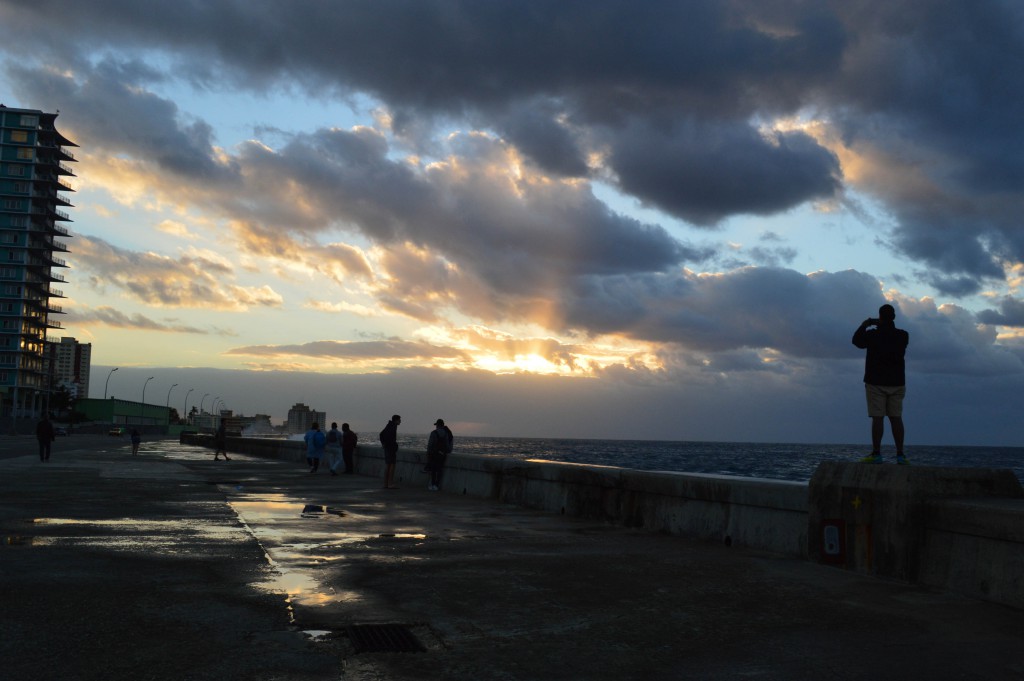
After 23rd Street, we meandered down Paleo en route to the Malecón, where the ocean waves were slamming the wall and exploding upward with force and vigor. The ocean was in great upheaval as far as I could see, and they rolled in a dark blue, turning turquoise as they neared the stone wall. Some of the waves hit the Malecón with such force that they flooded the drainage system under the street and exploded up through the manholes, rocketing the manhole covers airborne, flying over to the other side of the median. We gave that area a wide berth when departing for the Residencia. Later in the evening, as the expansive dinner Carlos fed us began to make us feel sleepy, several of us sat on the terrace and told jokes until we were laughing too hard to speak.
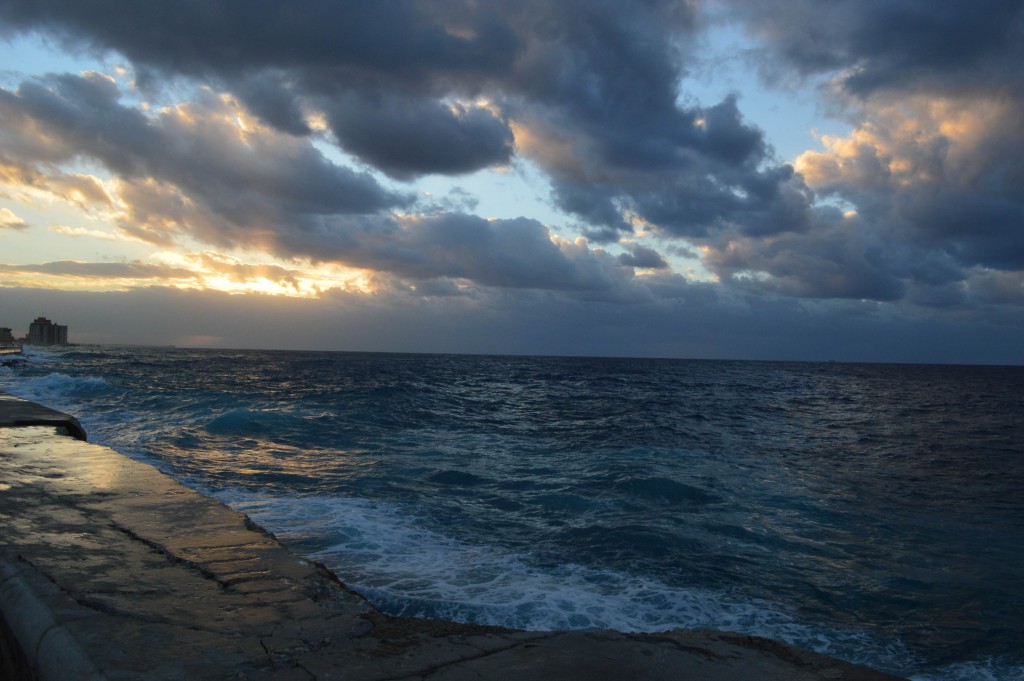
And that is what I believe this trip has been all about: learning how to coexist peacefully and joyously with those with many differences. Cuba has taught me much about what it means to be part of a community, on both a minute and a global scale.

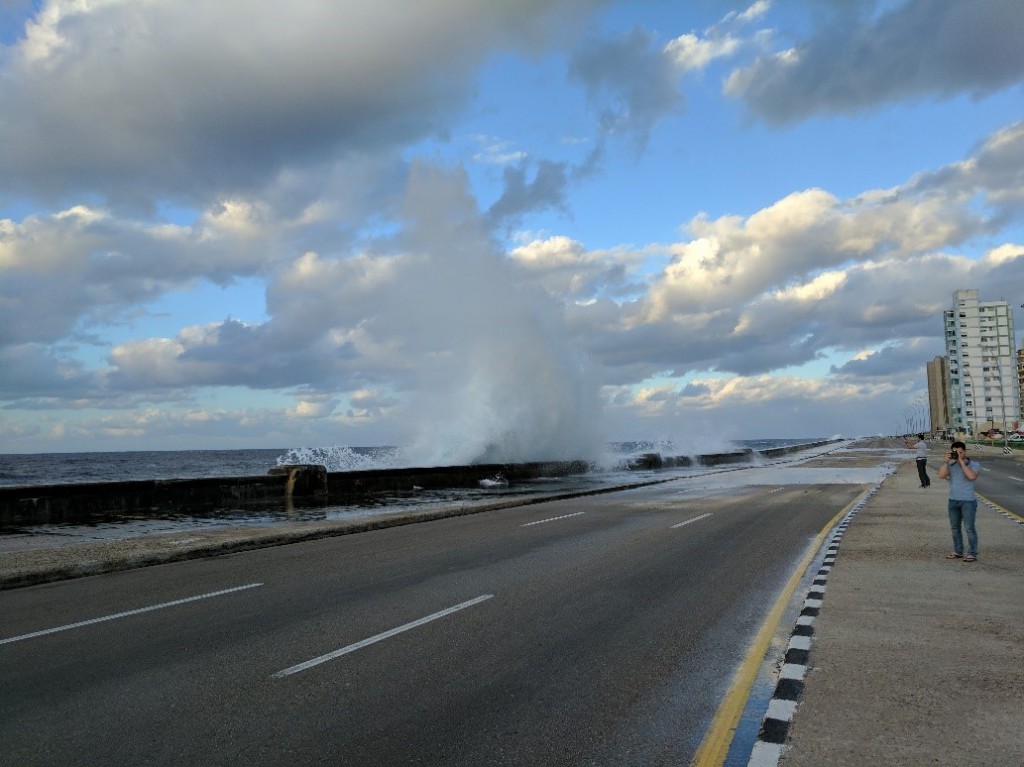 irst time since arriving in Havana, we traveled back into old Havana for the day to learn about Ernest Hemingway, when he visited Cuba in the 1940’s. As we drove along the Malecon, everyone watched as the waves crashed against the wall spilling over onto the road. This was the first time we witnessed the power of the ocean as it crashed into the sea wall. The winds were a result of the previous night’s storm and brought cool air in from the north. The ten foot waves hit the Malecon with enough force to send water above the tops of the streetlights.
irst time since arriving in Havana, we traveled back into old Havana for the day to learn about Ernest Hemingway, when he visited Cuba in the 1940’s. As we drove along the Malecon, everyone watched as the waves crashed against the wall spilling over onto the road. This was the first time we witnessed the power of the ocean as it crashed into the sea wall. The winds were a result of the previous night’s storm and brought cool air in from the north. The ten foot waves hit the Malecon with enough force to send water above the tops of the streetlights. e started off our day in Old Havana in the lobby of the Hotel Ambos Mundos, where Hemingway had always stayed before buying his house. The lobby had a pleasant atmosphere with someone quietly playing the piano by the entrance. People were scattered throughout the lobby occupying almost every seat with quite a few enjoying mojitos and other mixed drinks. The hotel seemed like a very relaxing place to stay and demonstrated the relaxing Cuban lifestyle which Hemingway enjoyed. After spending a little time in the lobby, we walked through the streets of old Havana visiting several noteworthy bars.
e started off our day in Old Havana in the lobby of the Hotel Ambos Mundos, where Hemingway had always stayed before buying his house. The lobby had a pleasant atmosphere with someone quietly playing the piano by the entrance. People were scattered throughout the lobby occupying almost every seat with quite a few enjoying mojitos and other mixed drinks. The hotel seemed like a very relaxing place to stay and demonstrated the relaxing Cuban lifestyle which Hemingway enjoyed. After spending a little time in the lobby, we walked through the streets of old Havana visiting several noteworthy bars.
 k for a quiet afternoon, but due to the number of tourists it was too busy and loud. Everyone who was visiting Havana seemed to want to go to the bars which were famous to get a drink and experience Havana the way they had read about, but with all the tourists the experience was dampened. The bars unfortunately felt more like tourist attractions than anything else.
k for a quiet afternoon, but due to the number of tourists it was too busy and loud. Everyone who was visiting Havana seemed to want to go to the bars which were famous to get a drink and experience Havana the way they had read about, but with all the tourists the experience was dampened. The bars unfortunately felt more like tourist attractions than anything else. hout too much trouble. Although it makes sense that anyone who owns a car would know how to fix it (more so than everyone in the United States), it still surprised me how quickly he could find and address the problem. The cold and the bus breakdown were two surprises that I didn’t expect to encounter during the day which made for a more interesting day along with the surprising number of tourists throughout all of Old Havana. Even with the busyness from the tourists, the city had a very peaceful feel with no one was rushing around and worrying about being late, instead people just wandered around enjoying the day. Except for the wind and cold, it was a beautiful day to wander around Old Havana and experience life as Hemming way did in the 1940’s.
hout too much trouble. Although it makes sense that anyone who owns a car would know how to fix it (more so than everyone in the United States), it still surprised me how quickly he could find and address the problem. The cold and the bus breakdown were two surprises that I didn’t expect to encounter during the day which made for a more interesting day along with the surprising number of tourists throughout all of Old Havana. Even with the busyness from the tourists, the city had a very peaceful feel with no one was rushing around and worrying about being late, instead people just wandered around enjoying the day. Except for the wind and cold, it was a beautiful day to wander around Old Havana and experience life as Hemming way did in the 1940’s.